Wearables: 2014 and Beyond
by Stephen Barrett on January 15, 2015 11:50 AM EST- Posted in
- Wearables
- Apple
- Microsoft
- pebble
- Android Wear
- Microsoft Band
- Fitbit
Wearable Products in 2014
Microsoft
In 2014, seemingly out of nowhere (as there were no leaks or press ahead of time), Microsoft launched their first wearable since 2004 with the Microsoft Band. The Microsoft Band utilizes a Cortex-M4 processor and thus runs an embedded OS, not Windows NT. As with other devices using microcontrollers, its first focus is fitness tracking and not smart watch functionality (although that is also included). Microsoft however does fitness slightly differently than their competitors and actually regards this as the launch of both the Microsoft Band and their health platform, Microsoft Health.
Microsoft Health is a cloud service, such as OneDrive, that aims to help improve the health of its users through data analysis and actionable feedback. Activity tracking devices and apps that connect to Microsoft Health publish data, with your permission, to the Microsoft Health server. Microsoft claims their cloud data framework and analysis provides the only total health service available. Additionally, the Microsoft Health framework is referred to as an open platform, therefore other companies can interface with it as both publishers of data and subscribers of analysis. Microsoft Health also connects to the existing Microsoft service, HealthVault, which contains personal and family medical information and lab results.
The Microsoft Band itself is the combination of 10 sensors, including some interesting ones such as skin temperature, UV light, and galvanic skin response. Uniquely, the Microsoft Band works with all three major mobile operating systems (iOS, Android, and Windows Phone) by connecting to the corresponding Microsoft Health app. However, you can perform activities (such as running) without a paired device.
Another unique feature is the continuous heart rate monitoring. Other devices, such as Android wear, only periodically query the wearer’s heart rate. Microsoft claims this allows them to do better holistic analysis of health. In my experience with the Moto360, depending on how tight you wear the device, the heart rate sensor may not work. Comparatively, the Microsoft Band is mechanically designed so the best way to wear it is always in close contact with your skin. Finally, Microsoft will even license the electronics and software design of the Microsoft Band for other companies to create their own wearables connected to Microsoft Health.
The band itself provides some smart watch features such as calendar, email, and messaging notifications. When paired with a Windows Phone, Cortana support is also available for similar functionality to Google Now. One difference between Android Wear and the Microsoft Band is with app interfacing. As mentioned previously, Android Wear relies on apps running alongside (on your smartphone) or on the device to do things such as run tracking. The Microsoft Band instead has built in support for run tracking, and can publish that data to both Microsoft Health and any compatible app like RunKeeper. Therefore, the Microsoft Band out-of-the-box has several fitness related functionalities without relying on 3rd party apps.
Given my less-than-stellar experience with RunKeeper providing run tracking on Android Wear, a first party approach to fitness is appealing. However, it remains to be seen if Microsoft can keep pace with the wide open field Android Wear provides to app makers.
All of this combined makes a strong argument that Microsoft is ahead of their competition for health related wearables. Google has Google Fit, which plans to provide similar cloud-health functionality and already has some APIs for apps to connect with it, but the web site for Google Fit is downright embarrassing and looks like a simple placeholder with almost no valuable information. Google also had Google Health, which was similar to Microsoft HealthVault, but Google shut down the service in 2011.
I have requested a Microsoft Band for review to analyze how well Microsoft has executed both the Band and Health launches. There are of course other aspects to the Band (such as guided workouts) I will cover at that time.
Apple Watch
While this is a 2014 year in review article and Apple technically did not launch anything in 2014, it is worth mentioning their announcement of the Apple Watch. In America at least, it is often the case that a technology will arrive on the market well ahead of Apple’s embrace and not see widespread acceptance. When Apple finally deploys the same technology, the technology crosses the chasm and sees widespread proliferation. NFC payment and Apple Pay are a good example. I saw one or two places offering NFC payment before Apple Pay; now there are dozens. Therefore, Apple announcing the Apple Watch is a watershed moment for wearables.
Officially coming to market in spring 2015, the Apple Watch experience appears to be more similar to Tizen based Samsung devices than Android Wear. To start with, the device itself contains WiFi in addition to Bluetooth and therefore should have more freedom than a standard Bluetooth enabled wearable. The core functionality of the device also does not revolve around Siri but appears to be a full blown iOS style launcher.
The Apple Watch likely uses an application processor (AP) and does not rely entirely on a microcontroller. This also correlates with the Apple estimated battery life of one day due to high consumer usage, as an AP will draw more power than a microcontroller when in use. The exact quote from Tim Cook is, “I think given my own experience, and others around it, that you’re going to wind up charging it every day. Because you’re going to use it so much.” Utilizing an AP opens the doors to more use of frameworks and APIs than low-level embedded coding, and therefore facilitates the 3 party app model.
Apple intelligently recognized the need for personalization and styling in a wrist worn wearable and will offer a staggering 34 different models of the device with varying cases, sizes, bands, and editions (Sport, Standard, Gold). Two interesting innovations set to launch with the device are a pressure based touch screen and a tap feedback output, providing a tap sensation in addition to a traditional vibration. We will have more coverage of the Apple Watch when it launches in 2015.
Others
Several other wearables exist (and are more popular in the case of Pebble and Fitbit), but these are going to face an increasingly difficult battle for relevancy in the face of efforts from the main software ecosystem players – Apple, Microsoft and Google. However, Microsoft’s strategy of licensing hardware design and Android’s more off-the-shelf operating system approach means we should continue to see unique wearables going forward.
Pebble Steel
Pebble is likely the most mature smart watch wearable at this point, given its launch in 2013. Pebble devices possess many days of battery life, a unique perk over the competition. Pebble owes its battery life to the use of a low power microcontroller, low resolution e-paper display, non-touch screen, and only three sensors (accelerometer, compass, light sensor). Therefore, this is certainly not a smartphone on your wrist.
Interfacing with Pebble is accomplished with the set of four buttons on its sides. Pebble began as a dedicated notifications assistant, relaying notifications from paired devices, but has since expanded with some simple apps from 3rd party developers like QR code display to more complex apps such as GoPro control and RunKeeper. In 2014, Pebble launched the follow up, Pebble Steel. The Pebble Steel upgrades the mechanics from plastic to metal, and as I noted with my time using the leather banded Moto360, metal is much appreciated.
Pebble boasts the best water resistance of the lot, at an incredible 50 meters of depth. Other devices sporting IP67 are only okay up to a meter for 30 minutes, meaning if you jump into a pool you need to be very careful how far you let your arm drift down so you might as well take the device off.
FitBit Charge and Surge
Fitbit launched as an activity tracker in 2008 and has since been iterating on their designs. The first several revisions were clip on devices attached to your clothing, but since the Fitbit Flex in 2013 all have been wrist worn. I personally see wrist worn Fitbit devices everywhere and even worn as fashion accessories. My sister wears a Fitbit that is so decorated with 3rd party accessories it is difficult to discern it as a Fitbit instead of a simple bracelet.
These devices track steps taken, calories burned, and distance traveled. They can also do sleep tracking if you wear them 24 hours a day. Groups of coworkers or friends can use a connected smartphone app with social features to compete on how many steps taken and individuals can set personal step goals.
The Fitbit Charge launched in November 2014 and contains a small OLED display that boosts the utility of the Fitbit. The display shows the time, how many steps taken, and displays caller ID if your paired smartphone rings. The time and steps taken display are of notable utility as they prevent a trip to a pocket or purse to find the same information.
The Fitbit Charge HR supplements the Charge with a heart rate sensor. This expands the Fitbit further into a fitness device and begins pushing Fitbit into active activity tracking, such as running or cardio workouts. Alongside launching the Charge HR, Fitbit also expanded their app to record workouts, food eaten (through a barcode scanner or manual entry), and badge earning through workout goals. This was a significant launch for Fitbit to leverage their popular steps tracking position into remaining competitive with the bigger smart watch players.
The Fitbit Surge was announced in 2014 but will launch in early 2015. The Surge adds GPS and an LCD display to extend Fitbit’s activity tracking and smart watch functions.



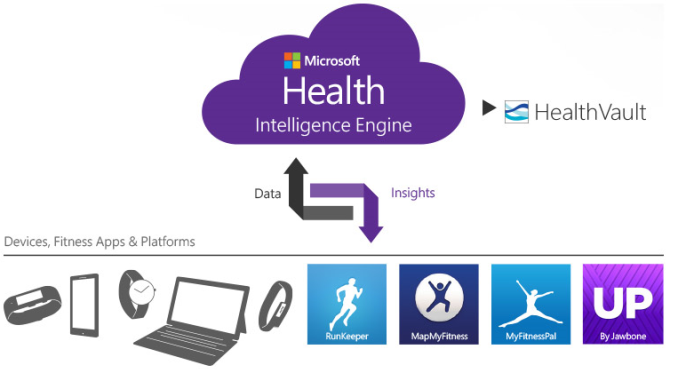
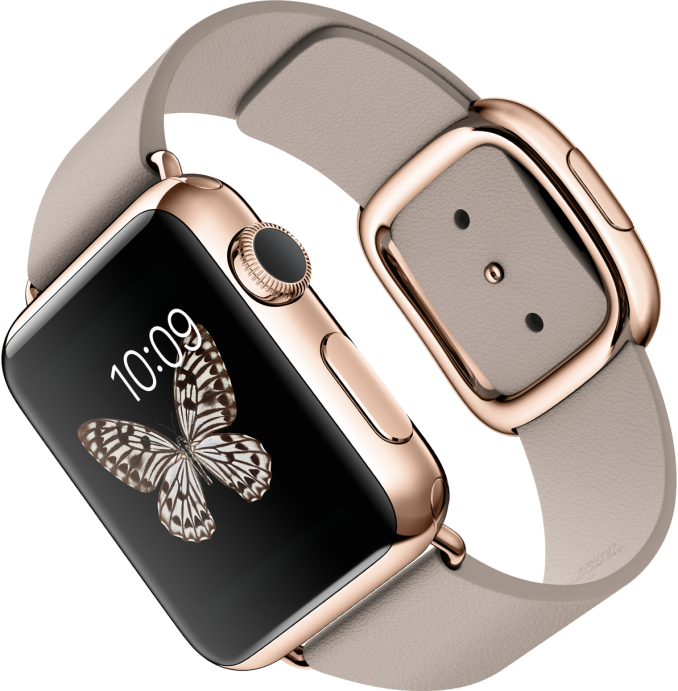
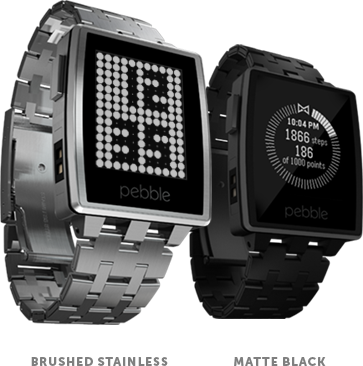
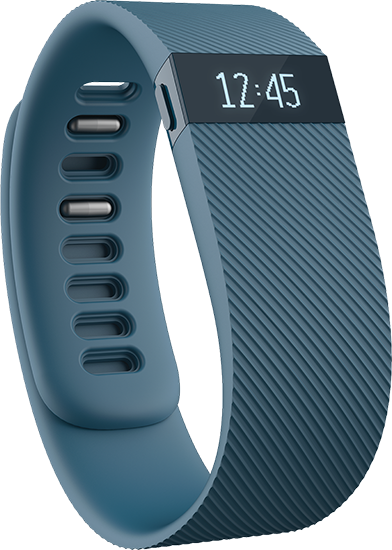
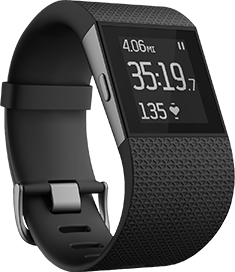








79 Comments
View All Comments
phoenix_rizzen - Thursday, January 15, 2015 - link
I wear a watch on a daily basis, and actually feel kind of naked without it. In fact, I almost can't tell time when I forget my watch, even though I have a phone in my pocket or hand at all times ... I still look at my wrist first and usually just go "ah crap" without checking my phone.I wear my watch on the bottom of my wrist (military style, or European style, or upside down, whatever you want to call it), which makes it very convenient to check the time while driving, or walking, or while holding things (like books). Much more convenient than trying to find my phone, or to stare down at the centre console in the car or to find a clock somewhere.
Now, that being said, I don't see a purpose to most of the smartwatches and fitness bands out there. I tend to not move my arms while walking, usually because they're holding my phone or a book, so I don't have much faith in "step counters" that don't attach to the parts that are "stepping". Most are also calibrated for the top of the wrist when it comes to heart rate monitoring, and I've yet to see a review that tested them on the bottom of the wrist. I also turn down my notifications (actually turn off cell/wifi radios via JuiceDefender) on the phone to only check every 30 minutes so not taking my phone out every 30 seconds isn't an issue.
name99 - Thursday, January 15, 2015 - link
"My one thought running through every page is who still wears a watch?"WOW. That is an original observation. I have never once, in the past three years, heard anyone make this claim before...
So you don't want to wear a watch? Fine, the party will move on without you and you won't be missed.
But what exactly do you expect an article on WEARABLES to talk about when the only damn wearable form factor that has any traction today is the watch/band? We're discussing here the wearables that one can buy today or, at least, in the next three months, not fantasies of what may be available in five years.
III-V - Thursday, January 15, 2015 - link
I wear one as a fashion accessory. Or I did, prior to the battery dying and the watch back needing enough pressure to compress graphite into a diamond to be put back on. Contrary to popular belief, how you look does matter.JohnnyBoBells - Friday, January 16, 2015 - link
Lots of people. We may not use it to tell time, but it is a great fashion accessory, especially for men, who are typically limited (albeit, by social standards, but that's a separate issue) in their options for wearable accessories. I've used my collection of watches as a great conversation starter (it's usually them who initiate, too!) with the numerous women I've bedded. A nice watch can complete that look along with a greatly tailored suit. So again, while maybe not used as often these days for its original intended purpose, watches are still worn by many people.aggiechase37 - Monday, January 19, 2015 - link
With the numerous women you've bedded? Remind me of the country song, so much cooler online.marvdmartian - Friday, January 16, 2015 - link
I've worn a watch since I was ~7 years old, and still do to this day. But being toward the end of the "baby boomer" generations, it's probably much more prevalent in mine, than in following generations.Phones/smartphones are okay for some functions, but I still find it much easier to just glance at my wrist to tell the time, than to pull out the phone. After 4+ decades of wearing a watch, it's unlikely I'd go without one, as it wouldn't feel natural.
eldakka - Thursday, January 22, 2015 - link
I stoped wearing watches because there was no need to wear a timekeeping/alarm device when the phone could do all this better and have many more functions. Now I feel naked without my smartwatch (like I used to feel before when I forgot my watch prior to smartphones) because with the watch I have the convienience of not having to retrieve a phone from my pockert to tell the time. I also no longer have to get the phone out to see whos calling to see if I care enough to fish it out to answer. I can see whis sent me aa sms and read the sms, and even send back pre-canned replies (useful for common replies such as "otw", "5 minutes out", "yes yes I wont forget to get it ") without getting out the phone.And im less likely to miss a call/sms/alarm/reminder with the wrist vibration (get your mind out of the gutter, yes I mean you!) when in noisy environments such as night clubs, train stations etc.
Dribble - Thursday, January 15, 2015 - link
Your use cases aren't great, you either have:a) fitness fanatics who love technology. I know plenty of people who stay fit and none of them need some device to tell them how they are doing. They kind of know as they live in the body in question. It's a market but its not very big.
b) people who can't be bothered taking their smart phone out of their pocket, which is all those watches enable - a short cut to see something your smart phone could show you.
The watch case make a little sense, if the watch was cheap enough (i.e. very cheap), but the whole point of wearables from a manufacturers point of view is their are something new that they can completely overcharge for.
The only one that really makes sense is google glass, but everyone has gone all 17 century on that and decided it's the work of the devil and all users need to be burned.
Penti - Thursday, January 15, 2015 - link
Obviously it would have to be a fashion accessory as once the watch was (and still is for some) to make sense spending millions into developing and marketing these devices. I wouldn't really use one if it doesn't have a semi-independent system running it's own apps, having it's own gps-receiver and so on. Though I have no use of having a cellular modem/radio in every device. Plus I don't wear jewelry so I don't see point of spending hundreds of dollars on one.For working out you don't really need to spend money, sure I was into mountain biking once but you don't need to spend hundreds of dollars on a cycle computer, you didn't need to about 20 years ago. Most people don't really need to collect those stats any way like these devices enable. Some other gear might cost you quite a lot though. But no need to really spend it on accessories. If you want to monitor your heart rate you don't need to spend more than a tens of dollars. If you want gps there is still a lot cheaper devices then say fitbit. Giving value to these devices will get tougher. Though I do see why companies like TomTom want to be in the game.
Stephen Barrett - Thursday, January 15, 2015 - link
Sure you dont need to do it but it does have benefits. For example Strava has an excellent fatigue graph it collects over time. Before a big race, you can adjust your prep accordingly to reduce your fatigue.